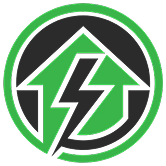
The Ultimate Guide to Transfer Switches: Ensuring Power Reliability
The Ultimate Guide to Transfer Switches: Ensuring Power Reliability
When it comes to ensuring a seamless transition during power outages, a transfer switch is essential. Whether you’re safeguarding your home, business, or any critical system, a transfer switch allows you to switch between your main power supply and a backup generator with ease. At BuildThePower.com, we offer a variety of transfer switches designed to meet your needs and provide peace of mind when the grid goes down.
What is a Transfer Switch and Why Do You Need One?
A transfer switch is a device that safely switches your electrical load between the primary power source and a backup generator. It acts as a bridge between the grid and the generator, preventing backfeed into the grid and ensuring your generator powers your home or business safely.
Here are some reasons why you should consider installing a transfer switch:
-
Safety First: A transfer switch ensures that the generator doesn’t send power back into the grid, preventing electrical hazards to utility workers.
-
Seamless Power Transition: With a transfer switch, you can instantly switch between your main power source and your generator, reducing downtime during outages.
-
Code Compliance: Many regions require transfer switches to meet local codes when installing a backup generator, ensuring your system is up to standard.
-
Convenience: Instead of manually plugging in your backup generator, a transfer switch automatically connects your generator to the electrical system.
Types of Transfer Switches
When selecting a transfer switch, it's important to understand the different types available. The two main types are:
-
Manual Transfer Switch
A manual transfer switch requires you to switch the power manually from your main electrical panel to the generator when an outage occurs. While more affordable, it requires action from you during power failures. -
Automatic Transfer Switch (ATS)
An ATS automatically detects a power outage and switches the electrical load to the generator. Once the power is restored, it switches back to the grid automatically, ensuring minimal interruption.
Key Features to Consider When Choosing a Transfer Switch
There are several factors to consider when choosing the right transfer switch for your needs:
-
Generator Capacity: Ensure that the transfer switch you select is compatible with the wattage of your backup generator.
-
Number of Circuits: Determine how many circuits you want to power during an outage. A whole-house transfer switch can power your entire home, while a smaller one can focus on critical circuits.
-
Type of Power Source: Ensure the transfer switch is compatible with your generator type, whether it’s portable, standby, or inverter-based.
-
Ease of Installation: Some transfer switches are easier to install than others. While some require a licensed electrician, others may be more DIY-friendly.
Benefits of Installing a Transfer Switch
-
Reliable Power: A transfer switch ensures you’ll have reliable backup power during emergencies.
-
Protection from Electrical Damage: It protects your appliances and electrical system from damage caused by backfeeding, which occurs when power from a generator flows back into the grid.
-
Reduced Stress: With a transfer switch in place, you can rest easy knowing that your home or business will be powered with minimal effort during a blackout.
Top Transfer Switches at BuildThePower.com
At BuildThePower.com, we offer a range of reliable transfer switches to meet your needs. Here are a few top picks:
-
Generac 50-Amp Manual Transfer Switch: A great option for smaller homes or businesses, this manual switch ensures a reliable power source during outages.
-
Eaton 100-Amp Automatic Transfer Switch: Ideal for larger homes or businesses, this automatic switch provides a seamless transition from grid power to generator power.
-
Reliance Controls 30-Amp Manual Transfer Switch: A compact, cost-effective option for those looking to power only a few essential circuits.
Safety Tips for Using a Transfer Switch
To maximize safety and performance, consider the following tips:
-
Always hire a licensed electrician for installation if you’re not familiar with electrical systems.
-
Perform regular maintenance checks to ensure your transfer switch is working correctly.
-
Test the switch periodically to ensure it functions as expected during an outage.
Conclusion
A transfer switch is an essential tool for anyone looking to protect their home or business from power outages. Whether you opt for a manual or automatic transfer switch, it provides peace of mind, safety, and convenience. Explore our wide selection of high-quality transfer switches at BuildThePower.com and ensure reliable power during every outage.

